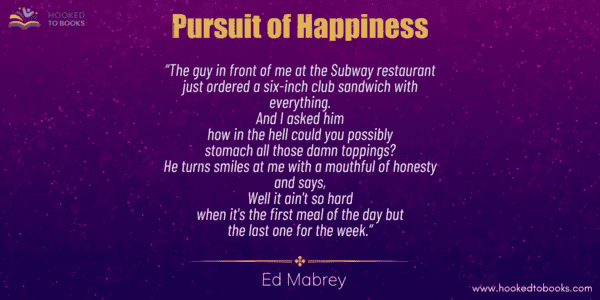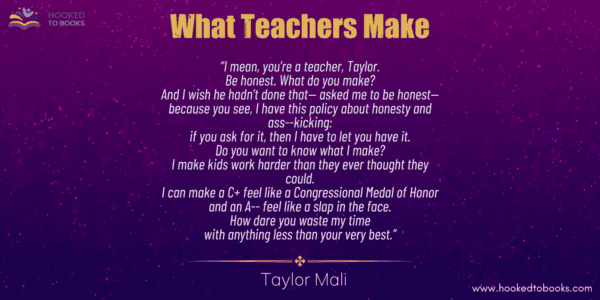Certain poetry is best enjoyed curled up quietly in an armchair, sipping a hot cup of coffee. Slam poetry is not that type of poetry.
Slam poetry falls under the category of spoken word. It’s a dynamic form of artistic expression that involves reciting poems to an enthusiastic audience. All this happens in an event known as a “poetry slam.”
Slam poetry aims to push boundaries, challenge perspectives, break traditional norms, and engage the audience in a truly interactive experience.
Unlike many classic poems of the eighteenth, nineteenth, and twentieth centuries, slam poetry is written to be heard, felt, and experienced in a communal setting. And everyone, including the writer, orator, and audience members, is involved in bringing this art form to life.
When did Slam Poetry Begin?
Slam poetry has been around for a while now. It began back in 1984 when American poet Marc Smith founded the movement in Chicago. Smith wanted to bring poetry out of the strict realms of academia and into the hands of the public and, more specifically, the working class.
But almost four decades after the slam poetry movement began, is it still in trend? Or has it faded into the cultural background, just like those dusty old Shakespearean sonnets? In this blog post, we’ll find out.
What is Slam Poetry?

Slam poetry differs from other types of poetry. It needs a stage, a group of judges, and an audience willing to immerse themselves in the full spectrum of emotion that the writer and orator are trying to convey. And, of course, it also needs the poet to recite their chosen work with passion and authenticity.
The delivery of slam poetry is a crucial element that sets it apart from other forms of spoken word. The poet uses dynamic intonation, inflections, gestures, and movements to convey their message and connect with the audience in a way that traditional poetry fails to do.
In return, the audience isn’t just quietly observing. They’re cheering, yelling, clapping, and laughing (or maybe even crying) in a collaborative exchange of energy between the poet and the listeners.
In a slam poetry competition, the audience also becomes the judges. Before the poets take the stage, the host of the event will pick a group of audience members at random, and when each performer finishes their piece, these audience members assign a score, usually on a scale of 1 to 10.
The scores are based on several factors, including physical presence, voice and articulation, and overall performance.
Examples of Slam Poetry
Slam poetry is performed by poets at all levels, and it can take place in small school halls or packed out stadiums.
Below, I’ll share some of the most famous slam poetry to come out of the scene to date, plus I’ll include a short excerpt of each one. However, I highly recommend watching the videos to appreciate the poet’s full immersive performance.
The Period Poem by Dominique Christina

Poet, activist, and performer Dominique Christina wrote this poem for her daughter after an ignorant tweet from an internet troll prompted her to fight back.
“See, it’s possible that we know the world better because of the blood that visits some of us.
It interrupts our favorite white skirts and shows up at dinner parties unannounced,
blood will do that, period.
It will come when you are not prepared for it;
blood does that, period.
Blood is the biggest siren, and we understand that blood misbehaves,
it does not wait for a hand signal or a welcome sign above the door.
And when you deal in blood over and over again like we do,
when it keeps returning to you,
well, that makes you a warrior.”
Joey by Neil Hilborn

This moving poem by Neil Hilborn delves into themes of mental health and depression as he shares the story of his childhood friend.
“We were 17, and I drove us all to punk shows
in a station wagon older than any of us.
We were 17 and I bought lunch for Joey more often than I didn’t.
We were 17 and the one time Joey tried to talk to me about being depressed
when someone else was around,
I told him to shut the hell up and asked if he needed to change his tampon.
You know that moment when the cartoon realizes he’s taken three steps off the cliff,
and he takes a long look at the audience like we are carrying the last moving box,
out of a half-empty house?
Joey looked like that
without the puff of smoke.”
Adrenaline Rush by Rudy Francisco

Performed at the 2017 Individual World Poetry Slam Finals, this poem by Rudy Francisco reflects on the human desire to seek thrills in dangerous situations. But for Rudy, that adrenaline rush happens every day, whether he likes it or not.
“So there’s this thing it’s called volcano surfing,
It’s a sport in which a person
rides down an active volcano
at speeds up to 50 miles per hour
using nothing but a wooden board.
When I heard about this activity,
I thought to myself,
it must be nice to feel so safe,
you have to invent new ways to
put yourself in danger.
When the body
thinks it may be swallowing its last breath,
the adrenal glands release hormones into the blood,
the skin becomes a cocktail of sweat and fear,
the heart gets claustrophobic,
the lungs become newlyweds
holding hands in a crashing airplane.
This is called an adrenaline rush.”
Pursuit of Happiness by Ed Mabrey

Award-winning slam poetry legend Ed Mabrey wrote and delivered this powerful piece to challenge preconceived notions of the so-called American Dream.
“The guy in front of me at the Subway restaurant just ordered a six-inch club sandwich with everything.
And I asked him
how in the hell could you possibly
stomach all those damn toppings?
He turns smiles at me with a mouthful of honesty and says,
Well it ain’t so hard
when it’s the first meal of the day but
the last one for the week.”
What Teachers Make by Taylor Mali

This heartfelt, hard-hitting, and hilarious poem is a celebration of teachers everywhere and the difference they make in children’s lives.
“I mean, you’re a teacher, Taylor.
Be honest. What do you make?
And I wish he hadn’t done that— asked me to be honest—
because you see, I have this policy about honesty and ass-‐kicking:
if you ask for it, then I have to let you have it.
Do you want to know what I make?
I make kids work harder than they ever thought they could.
I can make a C+ feel like a Congressional Medal of Honor
and an A-‐ feel like a slap in the face.
How dare you waste my time
with anything less than your very best.”
Is Slam Poetry Still on Trend?
Absolutely. Even today, forty years after the birth of the first poetry slam, this artistic movement is reaching audiences around the globe, both live and in person and online.
In fact, what was once an underground scene has officially gone mainstream, and poetry slams are more popular today than ever before.
This once US-based art form has now spread its reaches north into Canada, across the pond to Europe, and as far east as Japan. And today, many poets make their entire living by touring the globe and performing their work to international audiences.
Poetry slam competitions have become a regular feature in most major cities, and many schools and colleges in more rural areas are getting involved too.
So, if you haven’t explored the dynamic and electrifying world of slam poetry yet, I highly recommend you do.
Whether you’re a curious would-be audience member or you want to try your hand at performing your own work, there are countless opportunities out there.
A good starting point is the World Poetry Slam Organization which has links to exciting competitions and events around the globe. Poets.org is another great resource for finding readings, workshops, and events near you.
And if you need a little inspiration and motivation to put yourself out there as a slam poet, check out this informative TEDEd presentation to help you get started.
Conclusion
Slam poetry is a whole different ball game from the traditional classic poetry we all grew up reading in school. This dynamic art form is an expression of individuality, social justice, and raw emotion that aims to draw in an audience rather than a reader and take them along for the ride.
So, if you’ve never been to a poetry slam before, why not find one in your local area and give it a try? You don’t need to know your stanzas from your similes; you simply need an open mind and a willingness to experience the electrifying energy of spoken word.



